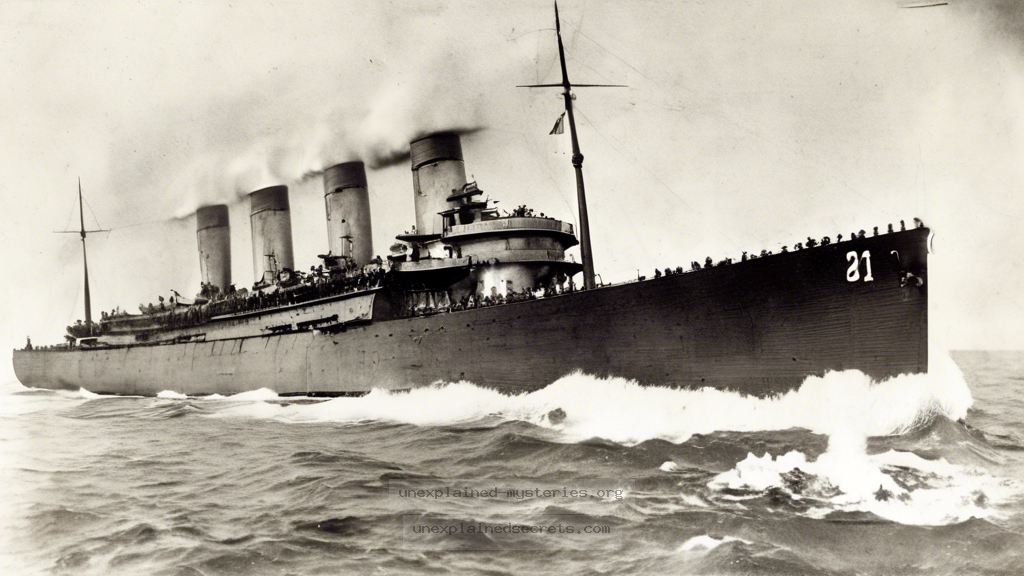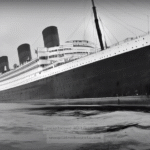What Caused the Mysterious Disappearance of the USS Cyclops in 1918?
What Caused the Mysterious Disappearance of the USS Cyclops in 1918?
The story of the USS Cyclops, a Navy cargo ship that vanished without a trace in March 1918, is one of the most enduring mysteries of the Bermuda Triangle. This case not only raises questions about the ship’s fate but also invites speculation about the nature of scientific anomalies and unexplained phenomena. The disappearance of the Cyclops is significant because it highlights the interplay between human history and the unpredictable forces of nature, making it a compelling study for historians, researchers, and enthusiasts alike. In this post, we will explore the historical context, core theories, alternative perspectives, and the ongoing intrigue surrounding this enigmatic event.
Historical Context: The USS Cyclops
The USS Cyclops was a Navy cargo ship commissioned during World War I. Launched in 1910, this ship was primarily used to transport coal and supplies to naval bases. With a length of 542 feet, it was one of the largest ships in the U.S. Navy at the time. In March 1918, the Cyclops was en route from Barbados to Baltimore with a crew of about 309 men and a cargo of manganese ore. The ship made its last communication on March 4, stating that it was experiencing rough weather. After that, it vanished without a trace, and no wreckage was ever found.
Core Concepts: Theories Surrounding the Disappearance
Several theories have been posited to explain the mysterious disappearance of the USS Cyclops. These range from natural phenomena to more speculative notions involving the supernatural.
- Weather Conditions: It’s well known that the Caribbean can experience sudden and severe storms. Some experts suggest that the Cyclops may have encountered a violent storm, leading to its sinking.
- Structural Failure: The ship was known to be in poor condition, with structural issues that could have compromised its seaworthiness. Some believe that a catastrophic failure could have led to its downfall.
- Sabotage: Given the context of World War I, some theories suggest that the ship could have been sabotaged by enemy forces or even by crew members.
- The Bermuda Triangle: The area where the Cyclops disappeared is famously known as the Bermuda Triangle, a region associated with numerous unexplained disappearances of ships and aircraft.
Practical Implications: Evidence and Investigation
Despite extensive searches conducted by the U.S. Navy, no wreckage or evidence of the Cyclops was ever found. This lack of evidence raises questions about the limitations of our investigative methods and the challenges involved in maritime research.
In the years following the disappearance, a variety of search efforts were initiated, including aerial reconnaissance and deep-sea explorations. However, the vastness of the ocean and the unpredictable nature of underwater currents make it exceedingly difficult to locate lost vessels.
Alternative Perspectives: Debunking the Myths
While the Bermuda Triangle has become synonymous with mysterious disappearances, many skeptics argue that the myths surrounding it have been exaggerated. Statistically, the number of vessels that disappear in this region is not significantly higher than in other heavily trafficked areas of the ocean.
Experts in maritime history have pointed out that many ships have traveled safely through the area without incident. The Cyclops may simply be one of many vessels lost to the sea, rather than part of a mysterious pattern.
Common Misconceptions: Addressing the Myths
One of the most common misconceptions about the USS Cyclops is that it was part of a series of mysterious disappearances in the Bermuda Triangle. In reality, the Cyclops is just one case among many, and its disappearance may not be as connected to the supposed paranormal phenomena of the Triangle as some would like to believe.
Another misconception is that the Navy has covered up information regarding the Cyclops. In fact, the Navy has been quite transparent about the disappearance, and the lack of evidence supports the idea that the Cyclops simply vanished.
Best Practices for Investigation: Learning from the USS Cyclops
The disappearance of the USS Cyclops serves as a valuable case study for modern maritime investigations. It highlights the importance of thorough planning, reporting, and communication when it comes to maritime travel.
Modern technology, such as GPS tracking and satellite imagery, can provide more accurate data and prevent miscommunications that could lead to disasters. Additionally, incorporating lessons learned from past incidents can improve safety protocols for vessels navigating challenging waters.
Future Developments: Ongoing Research and Exploration
Although the USS Cyclops remains lost, ongoing advancements in underwater exploration technology, such as autonomous underwater vehicles (AUVs) and side-scan sonar, may one day lead to its discovery. Researchers are continually looking for ways to improve search methodologies and understand the factors that contribute to maritime disasters.
Furthermore, the fascination with the Bermuda Triangle continues to spur interest in marine science and oceanography, leading to new research initiatives that aim to uncover the mysteries of the deep sea.
Conclusion: The Enduring Mystery of the USS Cyclops
The disappearance of the USS Cyclops in 1918 remains one of the most captivating mysteries in maritime history. While numerous theories exist, ranging from natural disasters to human error, the lack of evidence leaves us with more questions than answers. This case exemplifies the challenges involved in understanding our world, particularly in areas where human knowledge meets the unknown.
Whether one subscribes to the more supernatural theories surrounding the Bermuda Triangle or leans towards rational explanations, the USS Cyclops serves as a reminder of the sea’s power and unpredictability. As technology advances, we may one day uncover the secrets of this lost ship, but until then, the mystery endures, captivating the imaginations of many. 🌊✨
Other Articles
Recent Posts
- What Happened to Flight MH370? The Conspiracy Theories That Still Haunt Us
- What Secrets Lurk Within the Walls of the Infamous Trans-Allegheny Lunatic Asylum?
- What Evidence Supports the Existence of Bigfoot in the Pacific Northwest?
- What Happened to the Indus Valley Civilization? Unraveling the Mysteries of Ancient Urban Life
- Can Telepathy Be Scientifically Proven Through Laboratory Evidence?







